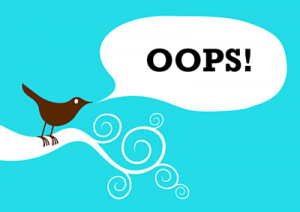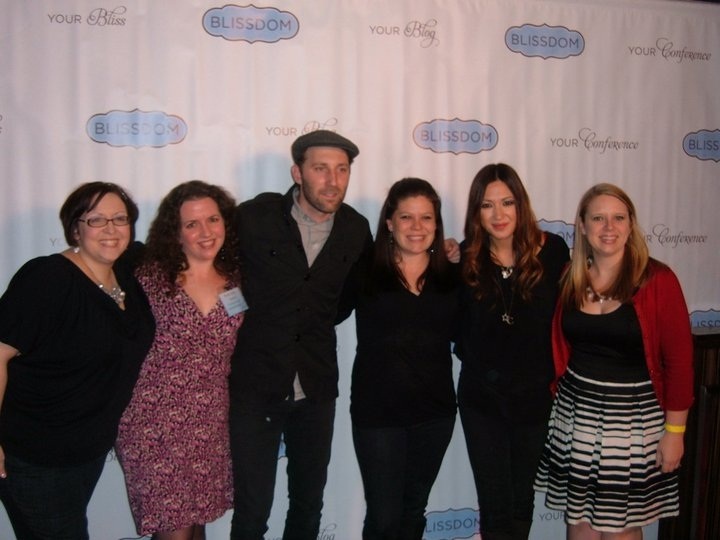Three months into 2011 and it may have already earned its title as the year of the social media blunder. First there was the Kenneth Cole debacle when the brand’s founder (allegedly) attempted to equate the “uproar” in Egypt with the excited demand for his new spring collection. Then there was the now infamous f-bomb tweet from @ChryslerAutos made worse by the fact that it insulted the city of Detroit - the same city that just so happened to have a starring role (alongside Eminem) in Chrysler’s recent ‘Imported From Detroit’ campaign. And soon after came the quack heard ’round the world, when former Aflac spokesman Gilbert Godfrey took to his Twitter in an attempt to garner laughs about the tsunami tragedy in Japan, where the insurance giant maintains 70% of it’s business. And as we type, yet another controversy is climbing it’s way to the top of the Trending Topics thanks to a video of GoDaddy CEO killing an endangered elephant for sport that he unabashedly posted on his blog. (sigh).
As expected the Monday morning quarterbacking ensued complete with re-curing reminders that big brands need not have just “anybody” maintaining their social channels and how one foul tweet can all but devastate a brand’s reputation. And while it’s easy to play expert when your brand isn’t smack dab in the middle of said crisis, the reality is, there’s no such thing as an airtight preemptive strategy .
.
The real deciding factor among winners and losers in crisis management comes down to the actions performed in the hours, days and months AFTER the blunder. So with that, let’s take a quick look at how the brands behind this year’s biggest blunders to date handled their respective aftermaths.
Kenneth Cole
Not surprisingly, the backlash from Kenneth Cole’s Egypt tweet was immediate. And to the brand’s credit they reacted swiftly but with what many considered a lukewarm and even patronizing apology via Twitter. Later the same day, a more sincere version showed up on KC’s Facebook page (which on a separate but puzzling note isn’t easily findable on Facebook because it’s vanity url reads Kenneth Cole Productions). The apology was run of the mill as corporate apologies often are and while it’s safe to say the controversy is largely behind them, could they have taken it a step further and leveraged KC’s foot in the mouth moment for something positive? A respectable donation to an Egyptian based charity coupled with a fundraising drive across Facebook and Twitter would have distracted from the snafu and at minimum resulted in some feel good press. KC quiets any opportunities for further criticism by putting his money where his foot was and something legitimately good comes out of the whole mess. While a donation seems unlikely at this point, hopefully a lesson was learned about the importance of self-checks for basic sensitivity and respect, before hitting the “tweet” button.
Chrysler
Chrysler was also swift to react and many argue a bit too harsh when they let go of their social media agency of record, New Media Strategies, (who prior to their own termination had fired the employee behind that now infamous tweet) just days after the controversy went live. When some initial criticism around Chrysler’s “extreme” reaction began to surface, they went straight to their company blog to defend their decision and also clarified a few misconceptions surrounding the order of things, specifically, that they did not fire the employee, rather NMS did. A few saw irony (and a little hypocrisy) in Chrysler’s handling of the situation and their “partnership’ with Eminem, somebody who (from what I hear) isn’t exactly a stranger to the “f-bomb”. But context is everything, right? And ultimately Chrysler found itself in a classic “damned if you do…” scenario largely influenced by the timing of the “Imported From Detroit” campaign. They had no choice but to reinforce their commitment to the restoration of both the city and the brand, which have now become interchangeable.
AFLAC
“Tasteless”, “Deplorable” “Reprehensible”. Just a few of the choice words used to describe Gilbert Godfrey’s attempt at Tsunami humor. An anonymous commenter put it best when she pointed out that “while Godfrey may have been doing his job as a comedian; as ‘spokesduck’ for AFLAC, he was begging to get fired.” And fired is what he got. Within 48 hours of their veteran spokesman’s tweets, AFLAC announced his termination. They also pledged a $1 million donation to the International Red Cross to support relief efforts in Japan. AND, in just a week, the time it takes for most corporate giants to sign off on an office supply order, AFLAC had launched a multi media supported (including prime time TV spots) talent search for the new voice of Aflac leveraging Facebook and Twitter as the entry points. This demonstrated their commitment to a space that could have easily turned against them not to mention it drove an even bigger wedge between the their trusty mascot and the insignificant voice of that comedian guy. Brilliant, agile and responsibly risky - all in one swift move.
So whats the big takeaway from all this? Put simply, stuff happens. And in a space as free flowing as social media, MORE stuff happens. The good news? It’s likely that as the novelty of the corporate social media blunder wears off, so too will the public’s seemingly insatiable thirst to see an iconic brand do something unbelievably stupid in real time. And more often than not these blunders are either forgiven or altogether forgotten, at least until the next one occurs. The ultimate question marketers should ask themselves is, how prepared is our brand/organization to deal with a blunder before it becomes tomorrow’s crisis?
Please check back next week for Part 2 of this post where we’ll talk about developing an effective Social Media Crisis plan BEFORE a crisis occurs.



